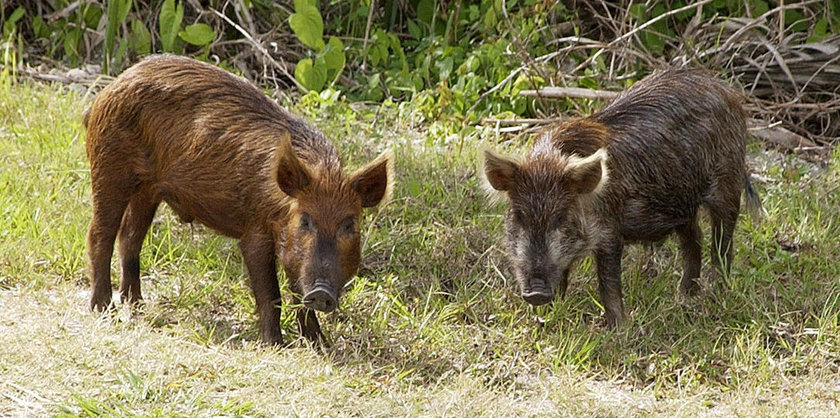
“Pigs gone wild” might sound like a bad, cable TV show, but they are no joke when it comes to their environmental impact. In Alabama, feral hogs – with their destructive rooting behavior and voracious appetites – pose a real threat to native plants and habitats.
At the 1,850-acre site of Farley Nuclear Plant, located near Dothan, the battle to protect the environment against wild pigs is ongoing.
The Plant Farley property was certified more than 20 years ago as a wildlife habitat by the nonprofit Wildlife Habitat Council. About two years ago, feral hogs first made their appearance at the plant. Today, Plant Farley personnel work with the U.S. Department of Agriculture (USDA) in efforts to control the pigs on the site.
“A population of feral hogs can double every four months,” explained Dana Johnson, a USDA wildlife specialist. “They have an alarming reproductive rate. They can reproduce as young as four months, have a gestation period of four months, and give birth to as many as 12 piglets per litter. So if you begin with two males and two females, in the optimum environment – in three years you can have a population of 16,000 if left unchecked,” Johnson said.
As a certified wildlife habitat, Plant Farley has both land and game management programs, and the wild hogs are threatening both. “They root up grasses and understory vegetation and compete with our native wildlife for foods,“ said Ken Darby, an environmental specialist with Southern Nuclear, which operates Plant Farley for Alabama Power. “They are also serious nest predators, destroying quail and turkey eggs.” The hogs also forage on tree seedlings, such as the native longleaf pine recently planted at the site.
Johnson visits the plant site periodically to assist with the capture of the feral hogs. “What we do here at Plant Farley is wildlife damage control.” Johnson said. “We also do testing for swine brucellosis and cholera.”
Since the hogs showed up at Plant Farley, about 50 have been captured, with USDA guidance. “Feral hogs can only be controlled by eradication,” Johnson said. “Relocating only spreads the problems to another area.”
The Farley habitat is made up of 1,350 acres of pine and hardwood forests, wetlands, open meadow and river frontage. The Plant Farley wildlife team also partners with state wildlife biologists to help manage a healthy deer and gopher tortoise population, and works with the Wildlife Habitat Council and the National Wild Turkey Federation to enhance the habitat for the eastern wild turkey.
A nest box program is maintained and monitored for purple martin, wood duck, eastern bluebird and osprey. In addition, about 130 acres of longleaf pine were recently planted at the site as part of a broader effort, supported by Southern Company, Alabama Power’s parent company, to help restore the longleaf ecosystem in the Southeast.
“Environmental stewardship has always been a top priority for our company,” Darby said. “The Farley wildlife team works, with the help of site management, employee volunteers and partners such as the USDA, to protect and enhance the plant’s wildlife habitat and maintain our certification. Handling this issue with the feral hogs is just one of many ways we work to do this.”
Don’t miss out! Subscribe today to have Alabama’s leading headlines delivered to your inbox.